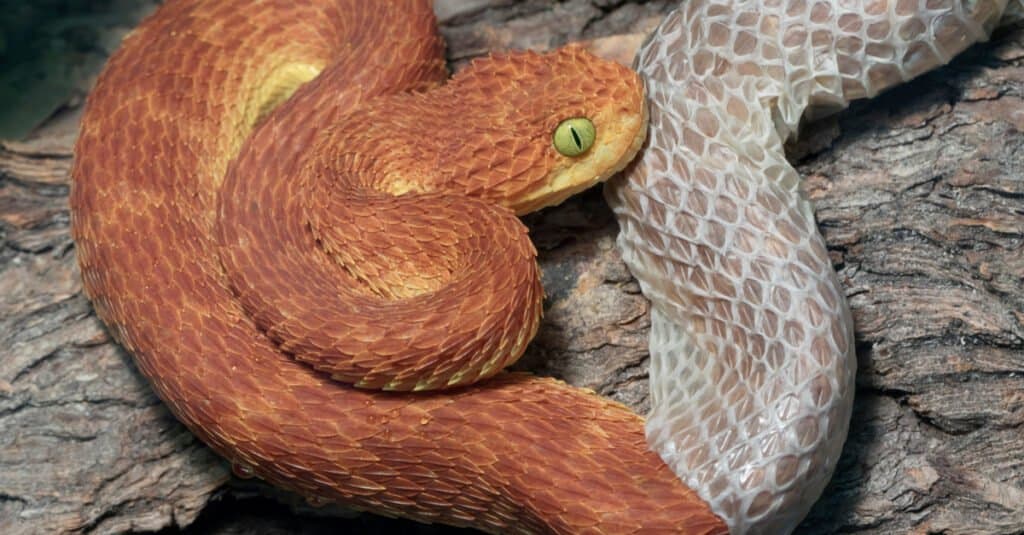
The post How Snakes Shed Their Skin Without Hurting Themselves appeared first on A-Z Animals.
Like other animals and insects, snakes shed their skin for many different reasons. This practice is beneficial to the snake as they grow older, but have you ever wondered why they have to shed in the first place? Let’s explore this interesting question. This YouTube short by @LivingZoology shows a snake shedding their skin against some tree bark! Keep reading below to learn more about snakes shedding their skin.

Snakes shed their skin more often while they’re growing.
©Mark_Kostich/Shutterstock.com
Why Do Snakes Shed?
There are a few key reasons that a snake sheds its skin: growth, skin health, and renewal. Unlike humans and other mammals, snakes have skin that is more rigid. As we grow up, our skin is able to stretch out to match the growth. Snakes, however, have a rigid outer layer that makes it difficult to grow. Because of this, they must shed their old skin in order to continue growing. Shedding old skin also helps support snake health by removing any parasites, scabbed injuries, or damaged, dead skin. Removing impurities from the skin supports the snake’s health and overall well-being. A fresh layer of skin displays a snake’s colors more vividly. This helps them either blend into their environments or have an easier time mating.
The frequency with which a snake sheds its skin differs greatly depending on its age, health, and species. For the most part, young snakes shed frequently—about once every few weeks—as they are growing the fastest. Initial growth spurts require new skin more often to match the snake’s rapid growth, since their rigid skin does not stretch. Adult snakes typically shed their skin about three to four times a year, or roughly every three to four months. This is because they have already grown into their skin and will mostly shed for reasons other than growth. One other primary factor influencing shedding is health. Just as our health may decline if we are sick or stressed, a snake may shed irregularly for similar reasons.

The molting process serves to remove parasites from a snake’s skin.
©Mark_Kostich/Shutterstock.com
How Do Snakes Shed?
Snakes shed in a straightforward and methodical way. A snake’s pre-shed phase starts about a week or two beforehand. During this time, their skin becomes dull as fluid builds up between the old and new layers. This fluid is lymphatic fluid. Although this fluid is different from that found in humans, it is similar to the liquid found in unpopped blisters. The snake then starts loosening the old skin. This is done by rubbing its head or nose against a rough surface, such as a tree, as shown in the video above.
This action tears open the old skin, allowing it to start peeling. Over time, the snake will slither through tight spaces or keep rubbing on rough surfaces to shed its skin. After shedding, the snake will resume its normal activities. While shedding skin entirely may sound painful, it does not hurt snakes. If the snake is in a dry environment, shedding can be more difficult and may lead to complications. For the most part, however, snakes are perfectly fine when shedding their skin.
The post How Snakes Shed Their Skin Without Hurting Themselves appeared first on A-Z Animals.
August 04, 2025 at 11:32PMSonny Haugen
.jpeg)
.jpeg)

0 Comments